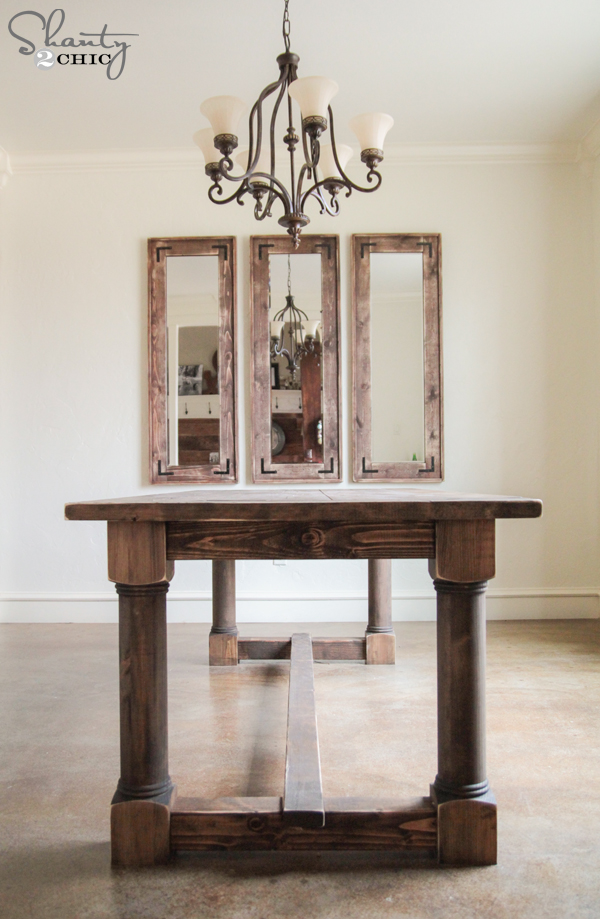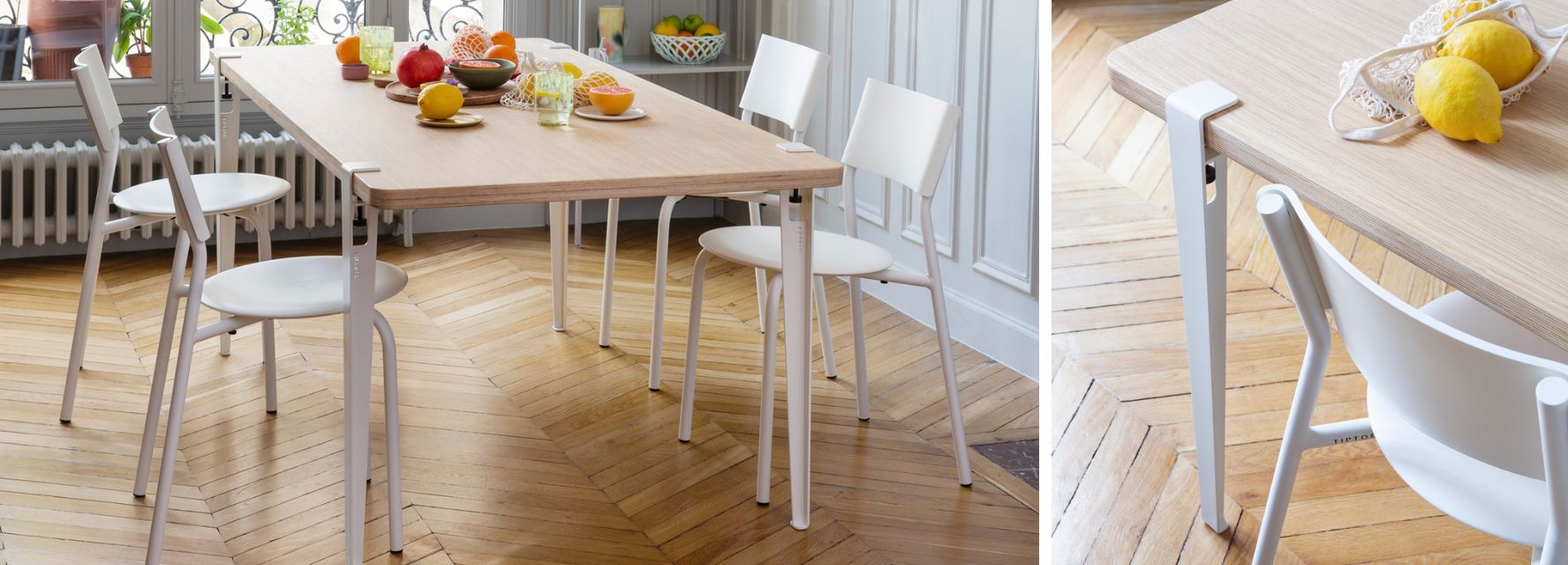How Dining Room Table Legs Can Change the Entire Aesthetic of Your Room
How Dining Room Table Legs Can Change the Entire Aesthetic of Your Room
Blog Article
From Standard to Modern: Discover the Suitable Eating Space Table Legs for Your Style
The choice of dining area table legs plays a pivotal function in specifying the general character of your area, connecting the void in between conventional craftsmanship and modern-day visual appeals. While classic designs such as cabriole and turned legs evoke a feeling of timeless elegance, modern styles like barrette and geometric options offer a possibility for striking visual rate of interest. Assessing the right balance between these designs calls for a nuanced understanding of your existing decor and personal preference. As you take into consideration these elements, the concern remains: how can you perfectly incorporate these varied leg designs to produce a harmonious eating experience?
Understanding Table Leg Styles
The range of dining room table leg designs can dramatically influence both the visual appeals and performance of the area. Each leg design contributes one-of-a-kind practical functions and visual aspects, catering to varied style preferences and use needs. Recognizing these designs is critical for selecting the right table that aligns with your overall interior decoration vision.
For example, conical legs provide a clean, timeless appearance that can boost a space's beauty, while stand bases offer stability and make best use of legroom, making them perfect for smaller rooms. Hairpin legs, a hallmark of mid-century modern layout, introduce a commercial flair, enabling a ventilated, open feel. Trestle legs stimulate rustic beauty, offering robust assistance and a feeling of timelessness.
Additionally, the choice of products plays a considerable role. Wooden legs can bring warmth and structure, whereas steel choices typically convey a sleek, contemporary ambiance. Inevitably, recognizing table leg styles is necessary for creating a cohesive eating area that shows personal style while making certain functionality and comfort. By attentively considering these elements, you can boost both the practical and aesthetic charm of your eating room.
Standard Table Leg Options
When selecting dining-room table legs, standard alternatives commonly embody timeless style and workmanship. These designs mirror a rich heritage and a dedication to top quality, making them excellent for those who appreciate traditional visual appeals.
Among one of the most renowned traditional leg styles is the cabriole leg, defined by its graceful curved shape. This design often features ornamental carvings and is most generally found in Queen Anne and Chippendale furnishings. One more popular option is the transformed leg, which boasts a collection of smooth, rounded forms that provide a traditional appearance while keeping stability.
Moreover, the straight leg, while basic, provides a unadorned and tough structure that can blend flawlessly with a variety of tabletop designs. For those attracted to ornate outlining, claw-and-ball feet legs stimulate a feeling of majesty and can work as a spectacular centerpiece in any kind of eating room.
Last but not least, stand bases, although not strictly legs, provide an alternate standard choice that permits for enough legroom and can be beautifully sculpted. Each of these conventional leg designs adds to the overall atmosphere of a dining-room, weding feature with aesthetic allure.

Modern Table Leg Designs
Modern table leg styles provide a diverse variety of designs that stress tidy lines and ingenious products. These layouts usually prioritize performance while working as striking prime focus within a dining area. Minimal visual appeals prevail, with legs crafted from materials such as metal, glass, and crafted timber, which add to a contemporary and ventilated feel.
One prominent style is the hairpin leg, identified by its slender, conical framework that offers security without frustrating the tabletop (dining room table legs). This style is commonly located in mid-century modern furniture and can effortlessly match different eating table shapes. An additional pattern is making use of geometric shapes, where legs look at these guys may handle angular or asymmetrical forms, including visual rate of interest and a touch of artistry

Mixing Styles for Special Spaces
Usually, house owners look for to create special dining spaces that reflect their individual style by blending numerous style components. This method enables for More Help the consolidation of varied aesthetics, leading to a harmonious yet distinct environment. For example, pairing a rustic wood table with smooth, contemporary steel legs can develop an appealing comparison that raises the space's overall allure.
Furthermore, incorporating vintage table legs with contemporary tabletops can stimulate a sense of background while preserving a contemporary sensibility. Such combinations not just showcase specific taste but additionally encourage imagination, allowing home owners to curate a room that really feels both individual and inviting.
Shade plays a crucial role in this mixing procedure; choosing table legs that complement or contrast with the existing shade plan can boost aesthetic passion. Whitewashed legs can soften the daring of a dark table surface area, creating a well balanced visual.
Tips for Choosing the Right Legs
Selecting the right table legs is important for attaining both capability and visual allure in your dining space. Begin by taking into consideration the general style of your space. Traditional setups gain from legs that include intricate makings or transformed layouts, while contemporary rooms webpage may call for streamlined, minimal styles.
Next, assess the elevation and stability of the legs. dining room table legs. Typical eating tables range in between 28 to 30 inches in height, so make certain the legs complement this measurement for convenience. In addition, robust materials, such as wood or steel, can improve stability and longevity
Review the leg shape also-- options include straight, tapered, or pedestal designs. Straight legs supply a classic look, while tapered legs can include a touch of style. Pedestal bases supply adequate legroom and are perfect for smaller rooms.
Final Thought
In recap, picking the optimal eating room table legs calls for careful factor to consider of both contemporary and traditional designs. By balancing leg style, elevation, and material with the total décor, a natural and inviting ambience can be accomplished.
The variety of eating room table leg styles can significantly influence both the appearances and performance of the space. Inevitably, comprehending table leg styles is crucial for developing a natural dining area that shows individual style while making certain functionality and convenience.One of the most legendary traditional leg designs is the cabriole leg, defined by its elegant rounded shape. Straight legs use a classic look, while tapered legs can include a touch of elegance.In recap, choosing the suitable eating room table legs calls for mindful factor to consider of both contemporary and standard styles.
Report this page